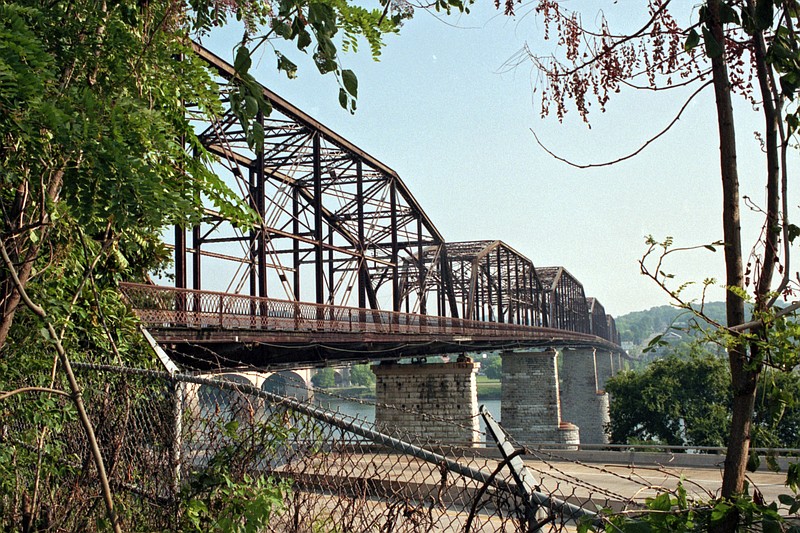Before it was a popular pedestrian walkway linking the Tennessee Aquarium district with Coolidge Park to the north, Chattanooga's Walnut Street Bridge was a rusting relic of the 19th century.
Shown here in 1992, the bridge had been closed since 1978 because of safety issues. Only the high cost of demolition (about $1.5 million) had saved it until 1988, when local, federal and private money was pooled to begin plans to refurbish the span.
This photo, taken by former Chattanooga Times photographer George Baker, is part of a collection at ChattanoogaHistory.com, a website filled with historic photos and curated by local history enthusiast Sam Hall.
The photograph shows the bridge before it was painted blue (its current color) and outfitted with wooden decking, parts of a $4 million renovation that led to its reopening as a "linear park" in 1993.
Earlier in its history, the bridge was the scene of the lynching of two Black men, Ed Johnson in 1906 and Alfred Blount in 1893. Johnson had been accused of assaulting a white woman, but maintained his innocence. An Ed Johnson memorial has been commissioned and is to be installed at the south end of the bridge by next year.
Last month, hundreds gathered on the bridge to celebrate Juneteenth, a holiday that commemorates the emancipation of slaves after the Civil War. On June 19, 1865, the final slaves in Texas were told of their freedom and the end of chattel slavery in the United States.
The almost half-mile-long span was built between 1889 and 1891, and is said to be Tennessee's oldest non-military bridge still in use today. The bridge, designed by engineer Edwin Thatcher, is a wrought-iron and steel through-truss design.
More Info
Launched by history enthusiast Sam Hall in 2014, ChattanoogaHistory.com is maintained to present historical images in the highest resolution available.If you have photo negatives, glass plate negatives, or original non‐digital prints taken in the Chattanooga area, contact Sam Hall for information on how they may qualify to be digitized and preserved at no charge.
The first permanent bridge across the Tennessee River here, it originally linked predominantly white Chattanooga with mostly Black Hill City on the north side of the river. Hill City was later incorporated into Chattanooga.
Originally, the bridge was not only for automobiles but it had street car tracks. It was in constant use for 87 years before closing in the late 1970s.
Now commonly called "The Walking Bridge" by locals, the Walnut Street bridge is a destination point for Chattanoogans and tourists alike.
The revival of the bridge sprang from Chattanooga Venture, a community visioning group responsible for much of the city's riverfront renaissance since the 1980s.
Contact Mark Kennedy at mkennedy@timesfreepress.com.
